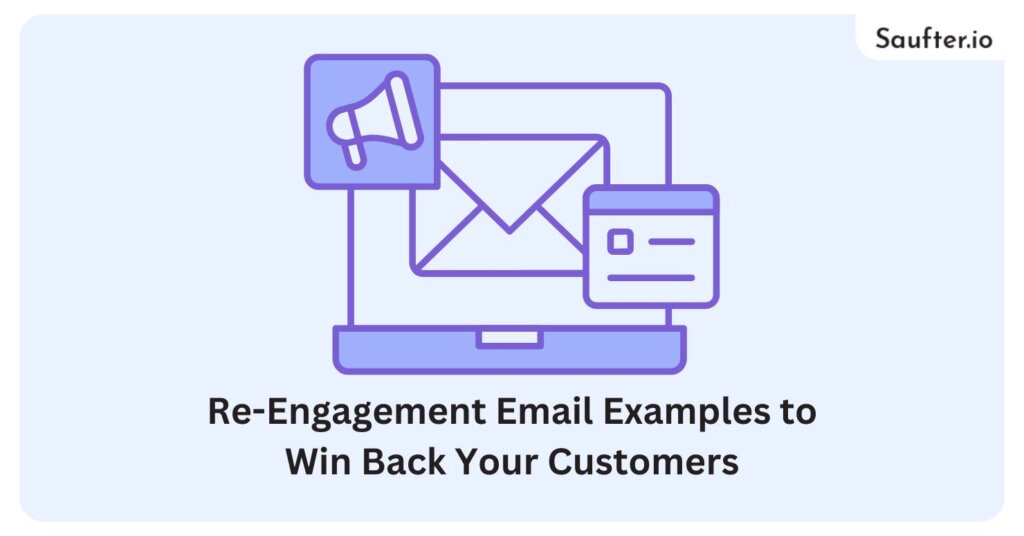Last Updated: November 2025
Customer attention is fleeting, and it’s not uncommon for once-engaged subscribers to go silent. In fact, reports says that up to 75% of email lists are inactive, highlighting the need for smart re-engagement strategies.
That’s where re-engagement email examples come into play. The right message at the right time can revive interest, renew trust, and bring customers back into your sales funnel.
In this article, we’ll share 15 proven re engagement email examples you can use to win back your audience and boost your retention rates.
What is a Re-Engagement Email?
A reengagement email is a specific message sent to inactive subscribers or customers who have not engaged with your brand in a certain length of time. What it does best is to reignite interest and push individuals to take action to win back lapsed users into your marketing flow.
These emails make up a customer retention plan that aims to prevent churn and get the most out of each subscriber through their lifetime. From reminding about an abandoned cart to presenting a special offer all the way to “I miss you”, re-engagement emails can help to improve the relationship with the customer and get them to do business with you again.
The average brand sends re-engagement emails 30 to 90 days after last customer activity, depending on the product or service cycle.
Why Re-Engagement Emails Work
Re-engagement emails are effective due to the fact that they’re aimed at a very high-value part of your audience; people that already know your brand. Not only have these leads or customers engaged in the past, they’ve expressed interest before, making them more likely and more cost-efficient to convert than going out and acquiring new leads.
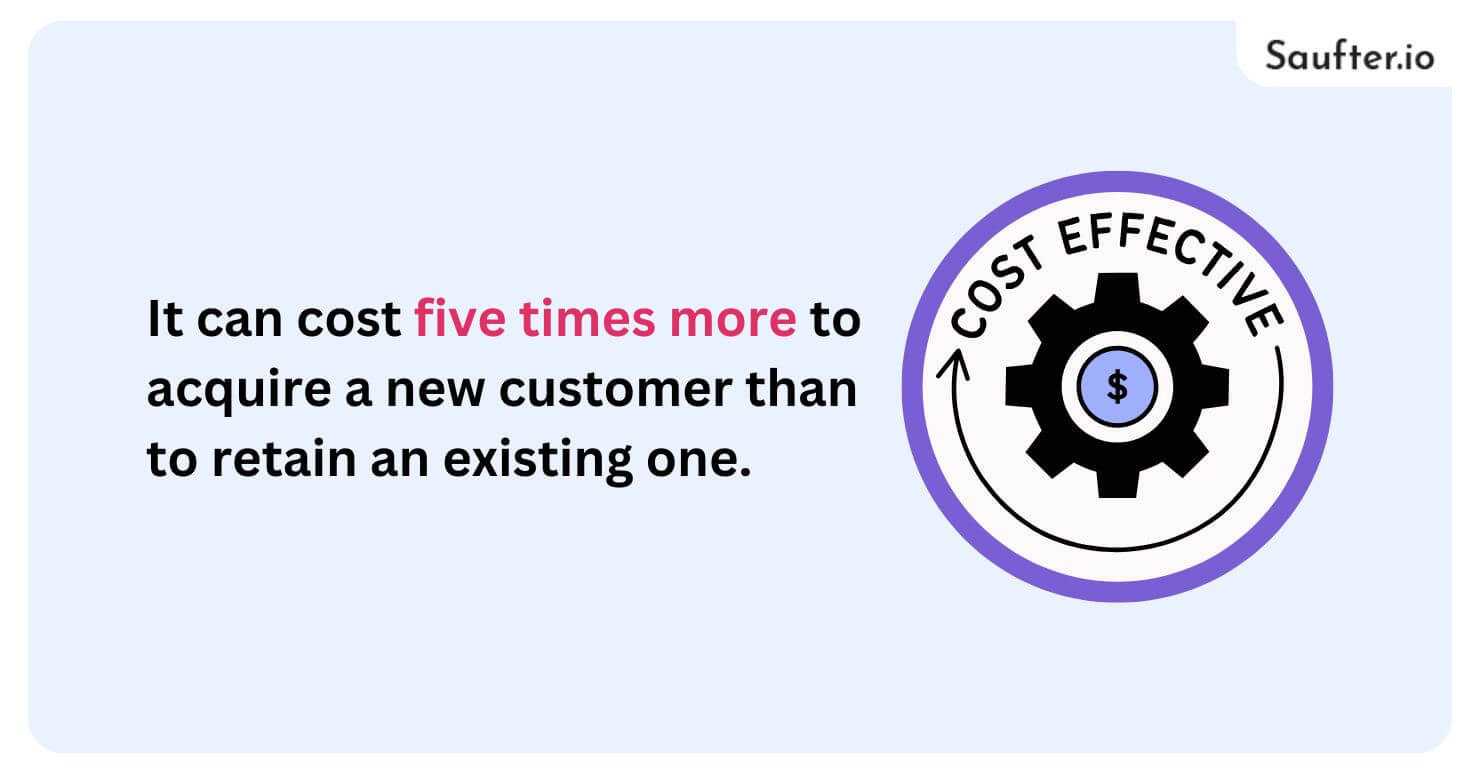
Here’s why re-engagement emails are effective:
- Retaining customers is cheaper than acquiring new ones. It can cost five times more to acquire a new customer than to retain an existing one, according to Invesp.
- They remind users of your value. The right re-engagement email can bring your app back to life by highlighting new capabilities, tailored deals or, plain and simple, reminding users why they downloaded the app in the first place.
- They clean your list and improve deliverability. Even if some don’t answer, a re-engagement campaign helps you pinpoint dormant subscribers and keep your email list in alignment.
- They trigger FOMO and urgency. Time limited offers, time sensitive content or account expirations can nudge the users to act on this faster.
- They increase ROI. Because you’re targeting people who already know your brand, re engagement email examples lead to better conversion rates as compared to unsolicited outreach.
In other words, re-engagement emails are a cost-effective approach to re-ignite dormant relationships and heighten customer lifetime value.
Re-Engagement Emails Best Practices
When it comes to successful re-engagement email examples, it’s not just about clever subject lines, strategies, timing, and relevance that come into play. Adopt these strategies to increase the odds of successfully re-engaging with dormant subscribers:
1. Personalize the Message
Personalize the email with the subscriber’s name, past purchase history or their browsing behavior. Personalization does more than make your message feel relevant, it gets the recipient to engage.
2. Create Compelling Subject Lines
Your subject line is the first impression. Use curiosity, urgency, or emotion to draw attention. Examples:
- “Still interested? Let’s reconnect.”
- “We saved something just for you!”
3. Offer an Incentive
Give your audiences a reason to check back for more information. It might be a discount, free shipping or early access to new features. Rewards will often entice further engagement and lead to conversion.
4. Keep It Clear and Concise
Do not bombard your readers with information. Keep the design clean with a single message and CTA.
5. Include a Strong Call-to-Action (CTA)
Use Actionable Language/words like “Claim Your Discount”, “Take Me Back”, “ Reactivate My Account”. Give the reader a clear sense of what to do next.
6. Use Visuals Wisely
Engaging images, GIFs, or product photos can enhance your email and reinforce your message. Just make sure they load fast and look good on mobile.
7. Test and Optimize
You should A/B test your subject lines, your CTAs, and when you send your emails. Leverage the findings for future campaigns. Even little changes can lead to a big increase in engagement.
8. Segment Your List
Inactive users are not all alike. Segment by behavior, last purchase or engagement level to send personalized re-engagement email examples to every segment.
9. Make It Easy to Unsubscribe
It might seem counterintuitive, but having a visible and easy to use unsubscribe option actually creates trust. And it also keeps your list clean and regulation-compliant for email purposes.
10. Time It Right
Email re-engagement at the right time; usually 30–90 days of inactivity. Too early and it seems pushy; too late and they might have forgotten your brand.
Best Re-Engagement Email Examples
So, here’s the million-dollar question. What does a good re-engagement email actually look like? If you don’t know, don’t fret; we’re here to tell you.
The following sections are filled with some of the most effective re engagement email campaign examples you can’t afford to miss in your journey to win back and reactivate the dormant email subscribers.
For each of the email templates, we’ve also created a list of re-engagement email subject lines, so you can start getting the most of your opens and campaigns.
1. Asana – Bring Subscribers Up to Speed
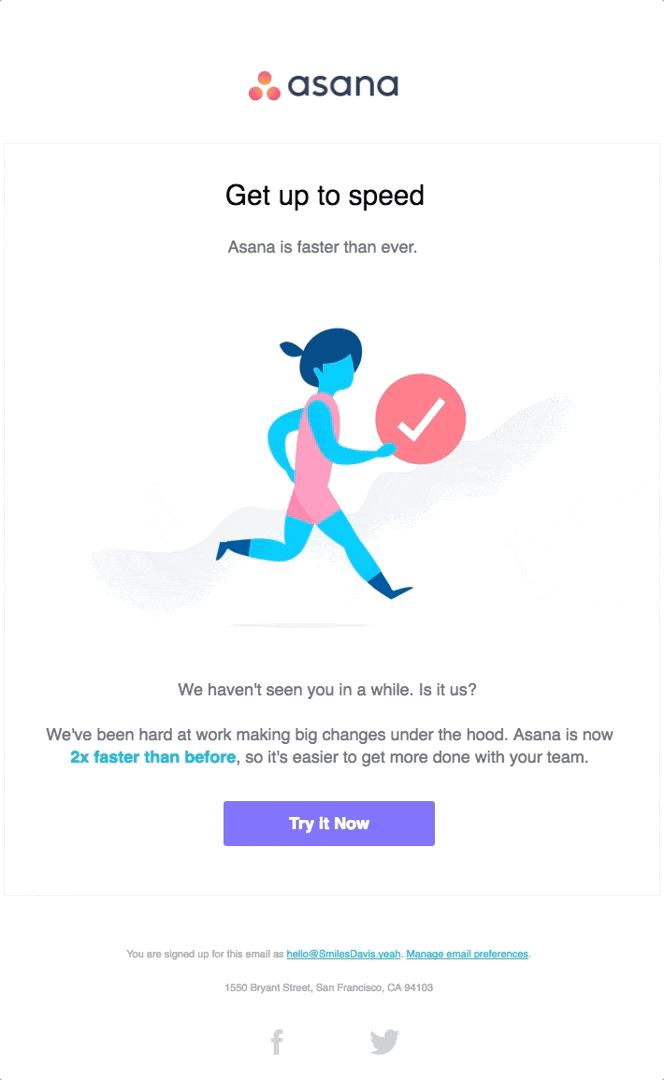
Idle subscribers could have forgotten about important changes while they were gone. Reinspire them by displaying something new, just as Asana has done.
Why it works: The email provides a little glance through the keyhole of what’s new or improved, encouraging recipients to come back and check out what’s new within the app. It’s to the point, simple, and has a clear CTA.
Subject line ideas:
- Since You’ve Been Gone…
- Here’s What We’ve Been Working On
- New [Product] Updates You’ve Missed
2. Juvee – Offer a Discount or Special Reward
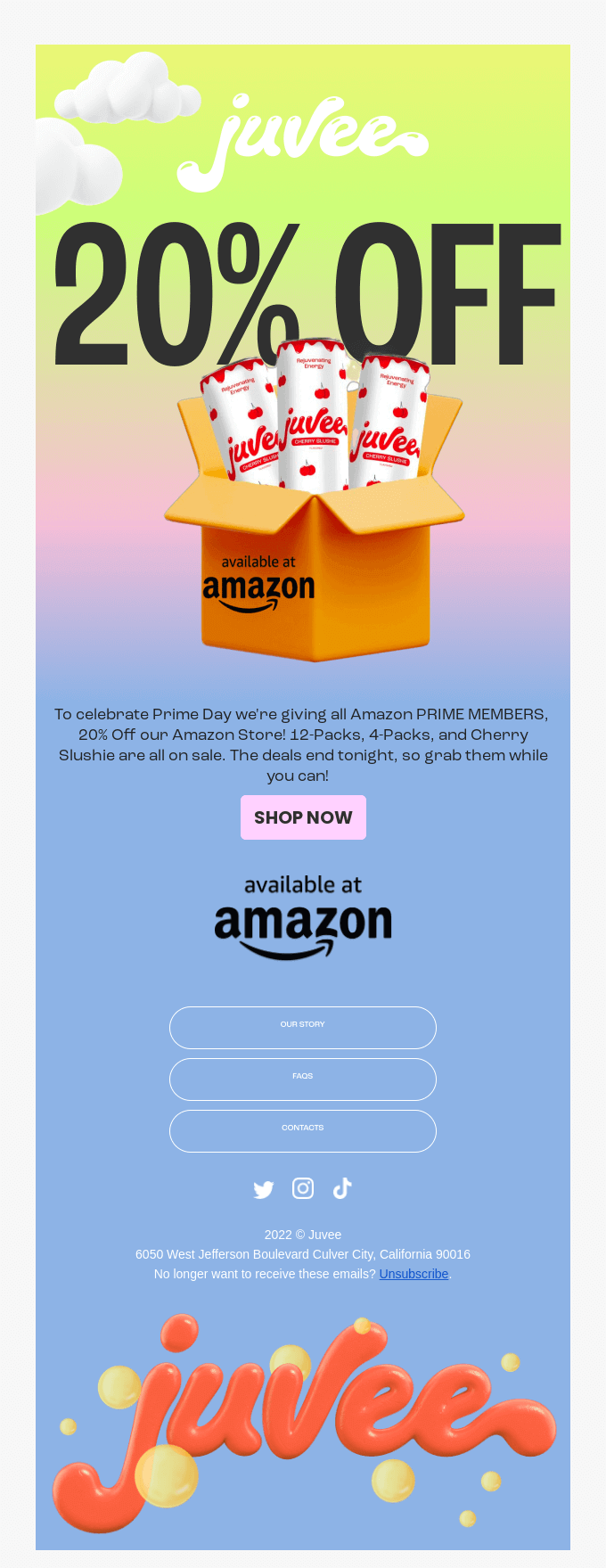
Everyone loves a deal. Juvee entices back customers with 20% off its bestselling Cherry Slush flavor; ideal for fans ready to restock.
Why it works: It’s a double appeal to both the wallet and FOMO (Fear of Missing Out). A special, limited-time offer creates some urgency and encourages people to act right away.
Subject line ideas:
- Last Chance Before the Offer Expires
- Get 15% Off Your Favorite Product
- Here’s Your Discount for [Product]
3. Duolingo – Send a “We Miss You” Email
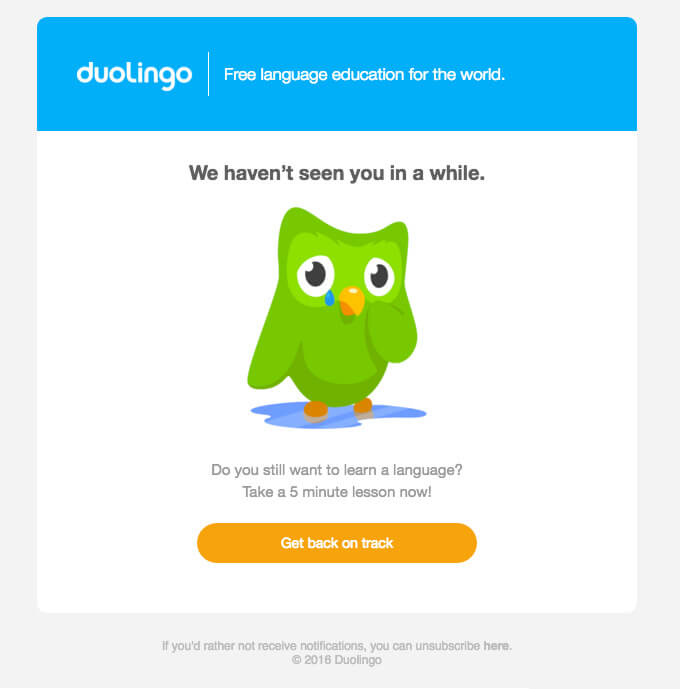
A sincere “we miss you” can mean a lot. Duolingo infuses character and emotion into their re-engagement email with visuals and fun.
Why it works: It humanizes the brand, elicits emotion, and sends readers a gentle nudge in the right direction for more, but no pressure.
Subject line ideas:
- We Miss You!
- Let’s Start Over…
- Long Time No See!
4. Parable – Address a Key Pain Point
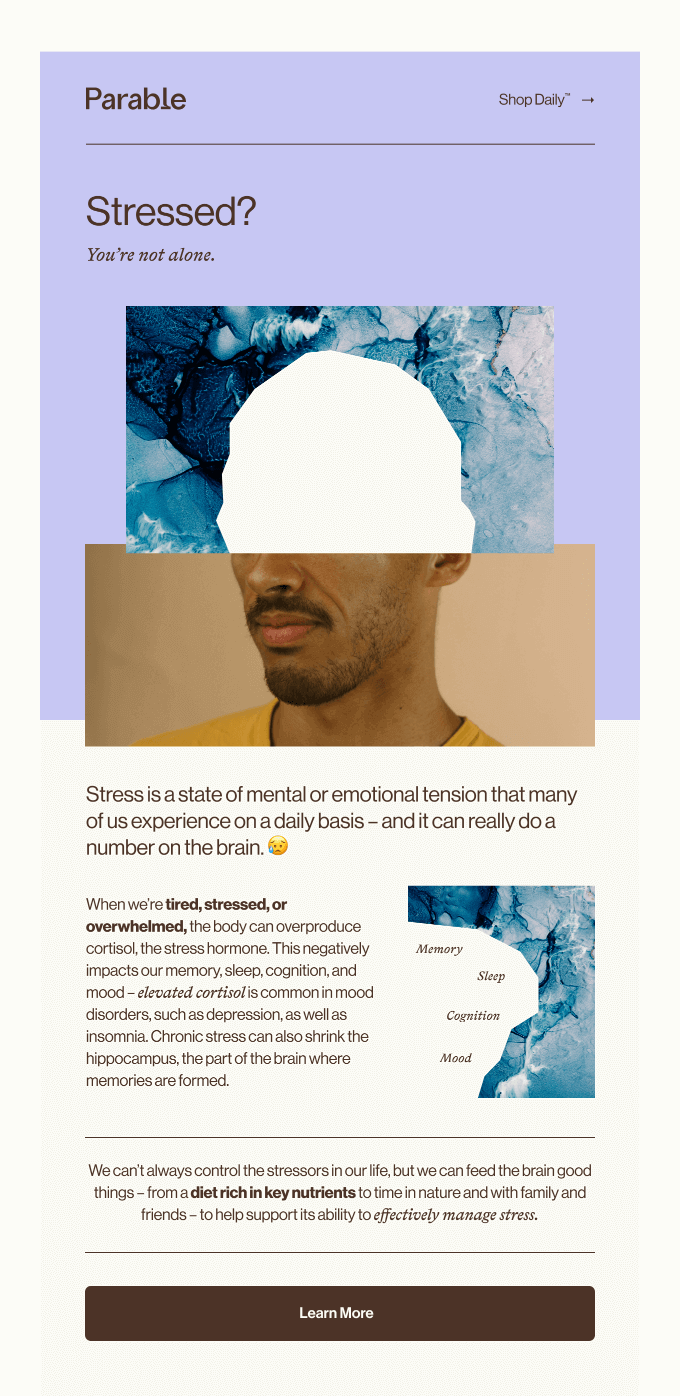
Parable uses empathy to relate to stressed-out subscribers, provides useful content and presents their product as a solution.
Why it works: Disruptors know that when they empathize with the frustration or fear of their customers, their emotional hooks become strong.
Subject line ideas:
- Let’s Talk About [Problem]
- Struggling with [Problem]? We’ve Got You
- A Better Way to Handle [Problem]
5. Surreal – Use Humor to Stand Out
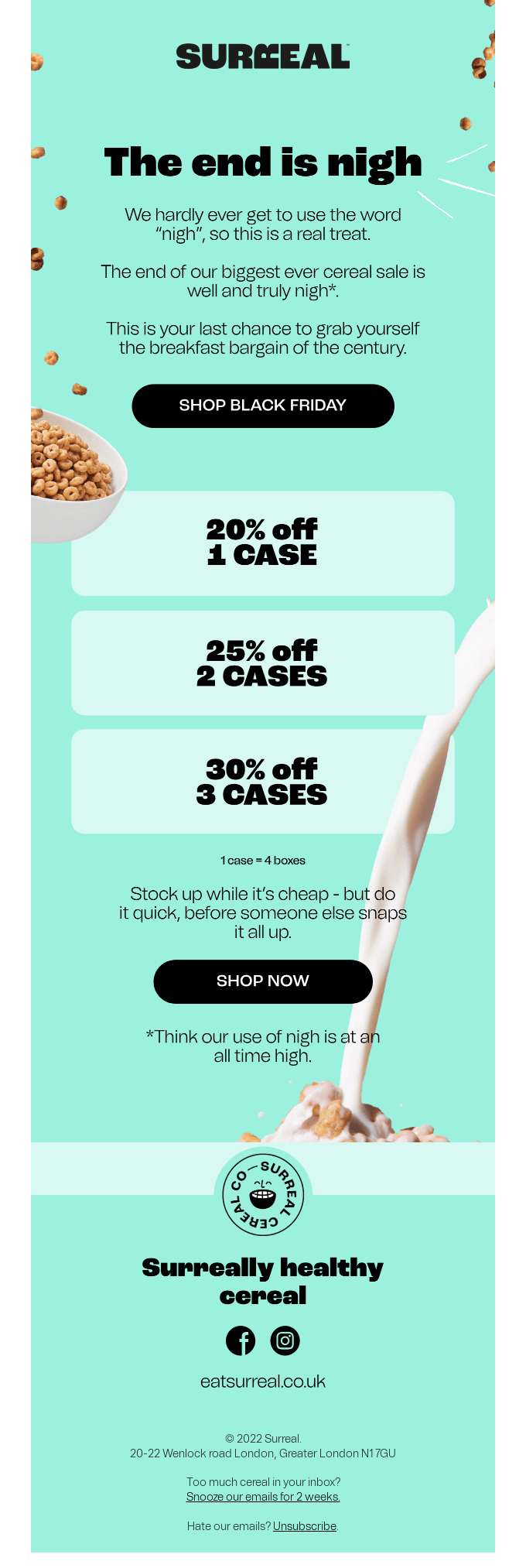
Humor grabs attention and makes your brand memorable. Surreal Email adds a humorous, playful twist to this message by mixing laughs with a special offer.
Why it works: Humor builds relatability and trust. If it fits with the tone of your brand, it can help make your re engagement email truly memorable.
Subject line ideas:
- The End Is Nigh! Grab Your [Product]
- This Is Your Last Chance!
- Hey, We Need to Talk…
6. Jetson – Celebrate a Special Occasion
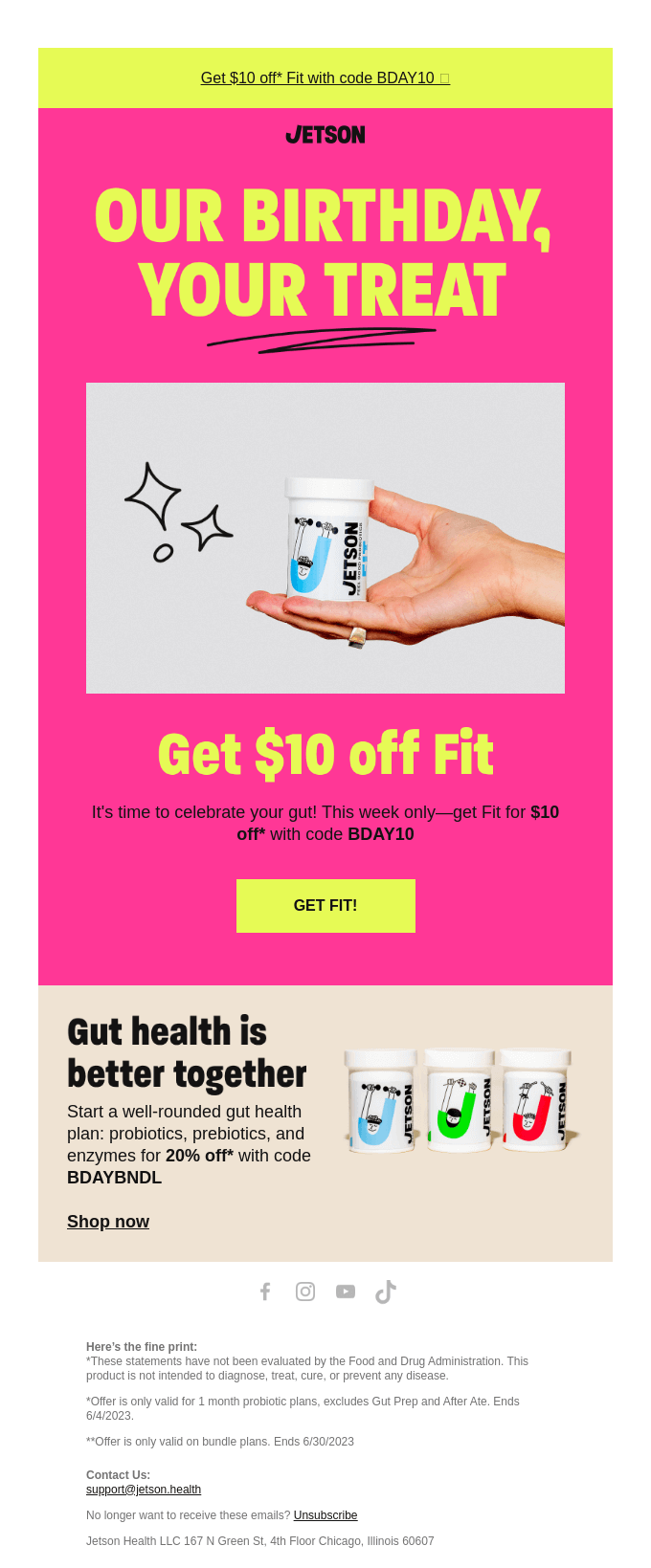
Jetson celebrates its birthday with a special gift: a $10 discount. Whether it’s your company’s or the subscriber’s milestone, it’s a great opportunity to rekindle.
Why it works: Personal or brand milestones are nice feel-good moments. Combine that with a special offer, and readers are that much more likely to take action.
Subject line ideas:
- Our Birthday, Your Treat
- A Birthday Deal Like No Other
- Celebrate With Us Today!
7. Coterie – Re-Engage Around the Holidays

Holidays also prove to be an effective time to reactivate customers who are no longer making purchases. Coterie plays into the holiday mood and also promotes products that are appropriate for the season and free shipping.
Why it works: It just gained a seasonal context and a feeling of belonging that turns a straightforward message into one that feels warm, timely and effective.
Subject line ideas:
- ‘Tis the Season, [First Name]!
- Happy Holidays from [Brand Name]
- Cozy Up with Our Holiday Deals
8. Google – Reward Loyalty

Google employs a re-engagement email not only for inactive users, but to solidify the relationship with users who have been loyal; providing 100GB of storage as a token of appreciation.
Why it works: Expressing gratitude keeps customers and reinforces why it’s worth sticking with your brand.
Subject line ideas:
- Your Gift from [Brand Name] Is Here
- Don’t Forget to Redeem Your Reward
- Thanks for Sticking With Us!
9. Salt & Stone – Send Personalized Recommendations

Use customer data to recommend products they’ll love. Like Salt & Stone Look called the item at top the best, but before you buy that, check out the best-sellers section. where you’ll also find a fan-favorite deodorant and the like.
Why it works: By personalizing product recommendations, brands could reinforce the status quo by reminding the shopper what she already loves.
Subject line ideas:
- Since You Bought [Product], You Might Love These
- Check Out These Picks for You
- Our Best Sellers Are Calling!
10. Withings – Highlight New Product Features

Withings uses this as an opportunity to share an app redesign and performance improvements in a neat, easy to read piece.
Why it works: It creates curiosity and confidence and, in particular, confidence from users who may have left because of bugs or old features.
Subject line ideas:
- Discover the New [Product] Features!
- We’ve Made Big Changes—Come See
- Try Our Latest Update Today!
11. Cuisinart – Ask If They Still Want to Hear from You
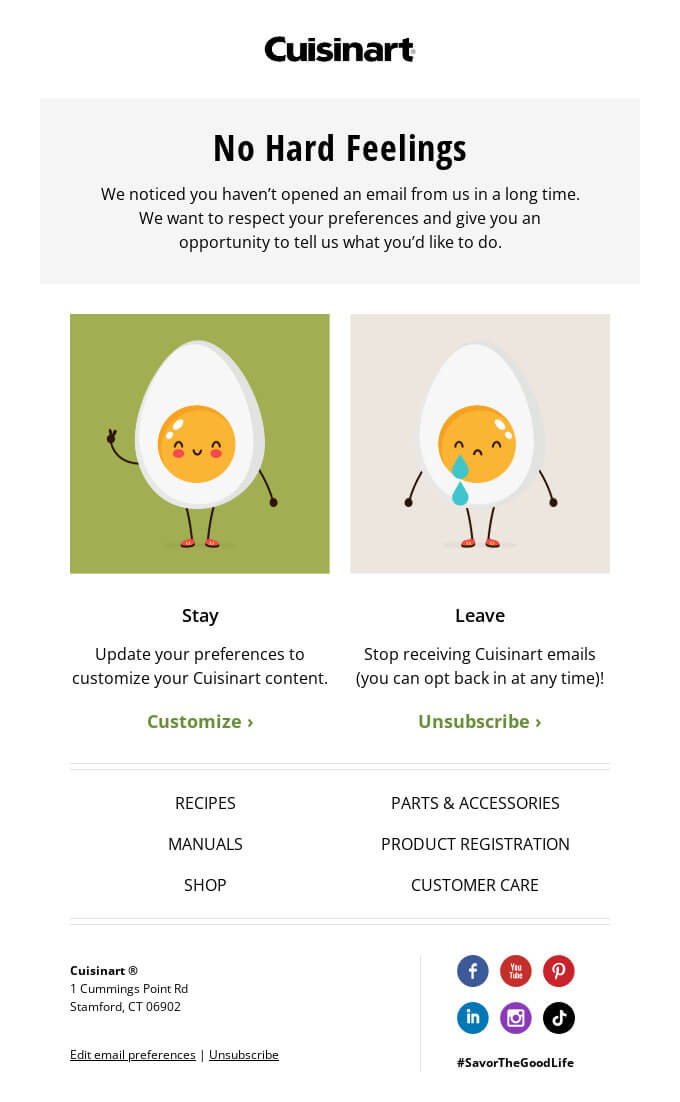
Now and again it’s just as well to go direct. Cuisinart occasionally checks in with subscribers to update preferences or unsubscribe.
Why it works: It respects user preferences and decreases churn by providing custom messages instead of non-specific emails.
Subject line ideas:
- Do You Still Want to Hear from Us?
- Customize Your Preferences
- Let’s Stay in Touch—Your Way
12. Avocode – Share Case Studies & Success Stories

People trust people. Avocode features case studies and free eBooks that teach how they helped actual users with their software.
Why it works: It creates social proof, which is all about trust. Reassuring subscribers why your product is worth their time.
Subject line ideas:
- See How [Customer] Uses [Product]
- Real Results with [Brand Name]
- Why Customers Choose Us
13. Wix – Promote a Flash Sale
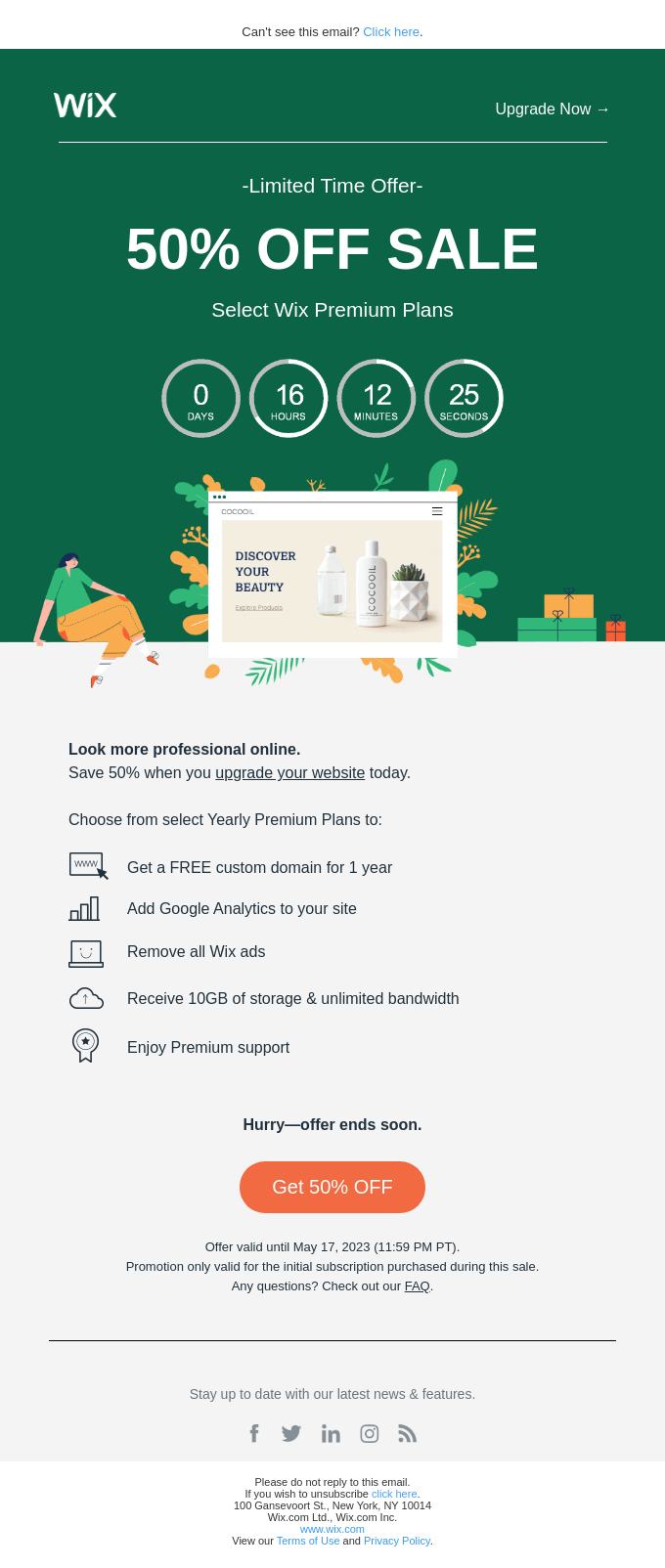
Wix makes it easy and urgent. A striking discount and countdown clock compels subscribers to act fast.
Why it works: FOMO and urgency sway fast decisions and re-engagement.
Subject line ideas:
- Hurry—This Sale Ends Soon!
- Save Big While You Still Can
- Don’t Miss Out on 50% Off
14. Shopify – Ask for Feedback
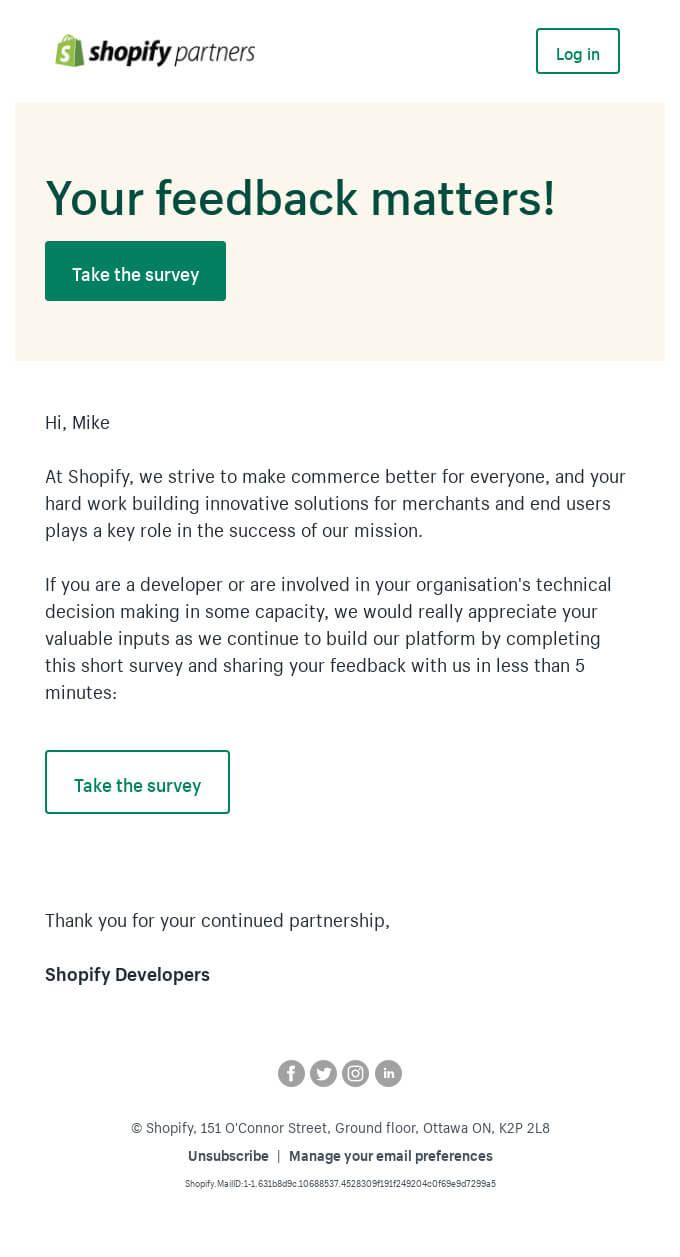
Shopify encourages feedback in the form of a customer satisfaction survey. That transforms engagement into nuggets of insight.
Why it works: Customers appreciate when brands listen. It also provides you with data to optimize future campaigns.
Subject line ideas:
- Got a Minute? We’d Love Your Feedback
- Help Us Improve [Brand Name]
- Your Thoughts Matter, [First Name]
15. Buoy – Share Educational Content
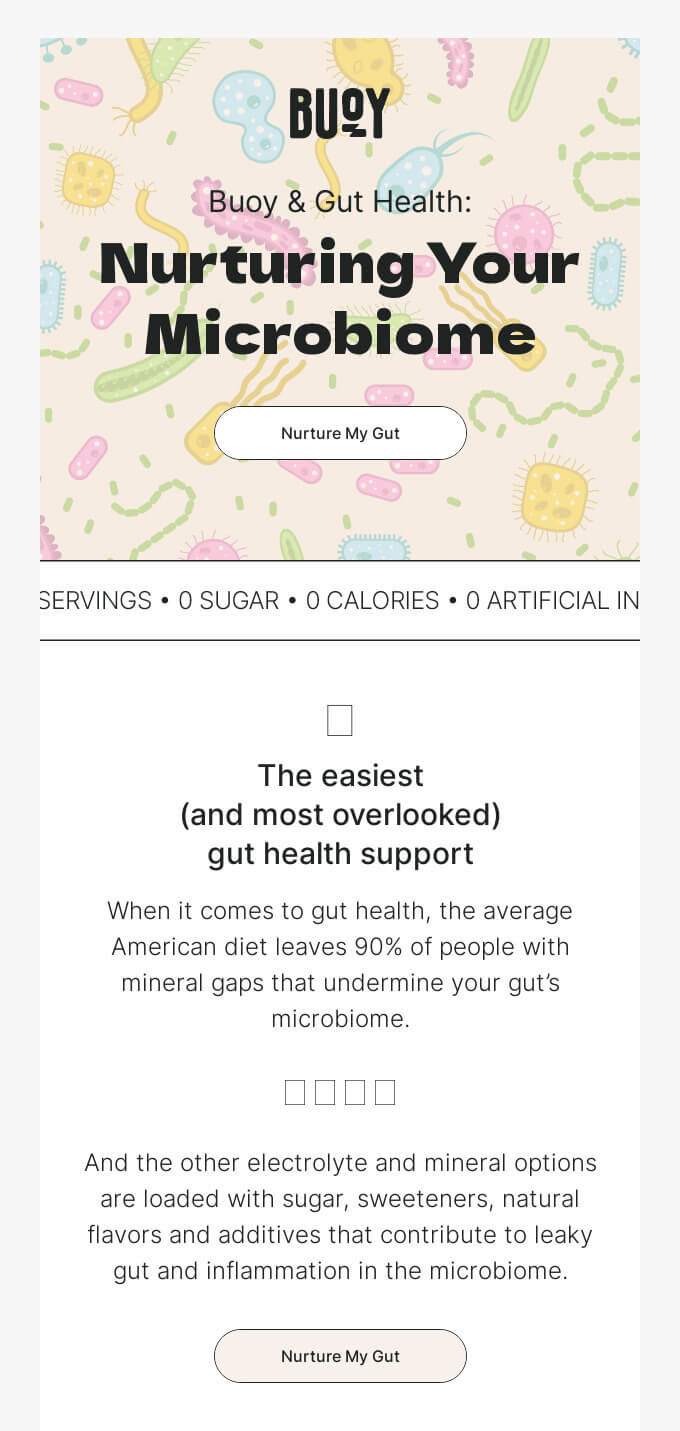
Buoy educates readers on gut health, while relating the message to its products; a subtle (but very useful!) method to attempt to re-engage.
Why it works: It’s less about discussing the product directly and more about sharing educational content that creates trust, shows your expertise, and makes a difference beyond the selling.
Subject line ideas:
- Want to Know More About [Topic]?
- Did You Know This About [Topic]?
- Boost Your [Topic] Knowledge Today
Re Engagement Email Marketing Strategy
The key to a successful re-engagement email marketing campaign is more than a one-off “We miss you!” message. It’s an orchestrated set of tactics that is proven to reignite relationships, recover attention, and maximize the lifetime value of your customers.
Here’s how to build an effective strategy:
1. Identify Inactive Subscribers
Begin by clarifying what “inactive” means for your firm. For example:
- No engagement (email opens or clicks) in the last 60–90 days
- None in the past 3 months.
Segment based on behaviour to only target the right people.
2. Choose the Right Timing
Timing is critical. Send re-engagement emails before the subscriber totally forgets your brand. 30-90 days of inactivity is common, however do set in correlation with your SaaS/product cycle.
3. Use a Multi-Email Sequence
Don’t rely on just one email. Create a re-engagement drip campaign that might include:
- A friendly “We Miss You” message
- An incentive like a discount or free gift
- A product update or new feature announcement
- A final email offering to unsubscribe or update preferences
Each email should have a clear goal and CTA (Call-to-Action).
4. Personalize the Content
Leverage subscriber information; such as name, past purchases or browsing history to help personalize messages. Users are more likely to re-engage with emails which feel relevant.
5. Test Subject Lines and CTAs
Your subject line will make or break whether your email is opened. Do some A/B testing to see which works best. Same goes for your CTA buttons; experiment with position, color, and message.
6. Monitor Performance and Optimize
Track key metrics like:
- Open and click-through rates
- Conversion and reactivation rates
- Unsubscribes or spam complaints
Use this data to improve future re-engagement email examples and refine your strategy.
7. Know When to Let Go
If a subscriber hasn’t re-engaged after multiple tries, maybe it’s time to remove them. A clean list increases your deliverability and ensures you’re targeting quality leads.
Saufter: The Best AI-Powered Email Marketing Tool
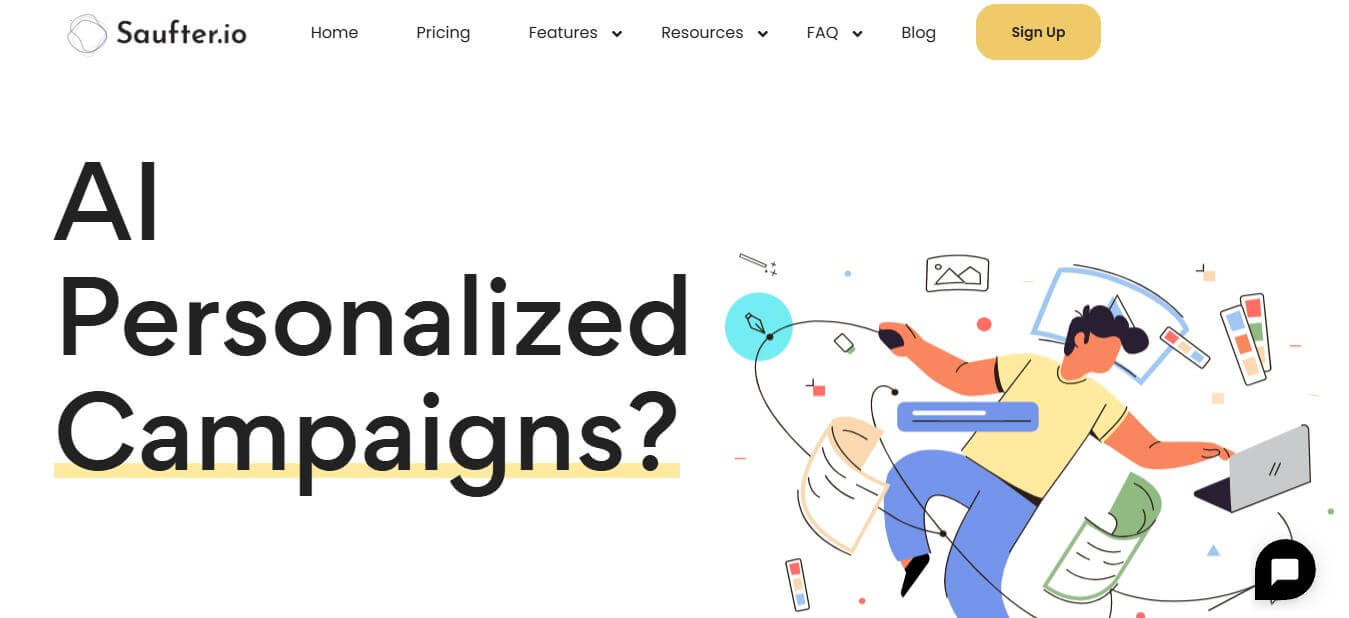
Saufter is a hybrid email marketing AI software that empowers businesses with smarter, personalized re-engagement campaigns. It uses machine learning to track competitors’ email strategies, and analyze your users’ behavior on the website to provide relevant campaign ideas.
By knowing exactly where each user is on their journey, Saufter customizes emails to increase deliverability and engagement.
Saufter for SaaS brands, tracks what features users interact with in onboarding, and determines which of those drive success for a business by industry or geography. So you can trigger in-app nudges or email reminders for those who drop off. It will recommend a newsletter campaign for each user based on the user’s profile.
Powering e-commerce, Saufter sends out automatic emails for cart abandonment, purchase, and delivery. It follows browsing to recommend products and times campaigns to convert.
Powered by cohort analysis, personalized content and behavioral tracking, Saufter enables you to re-engage a group of subscribers automatically with a data-oriented precision.
Conclusion
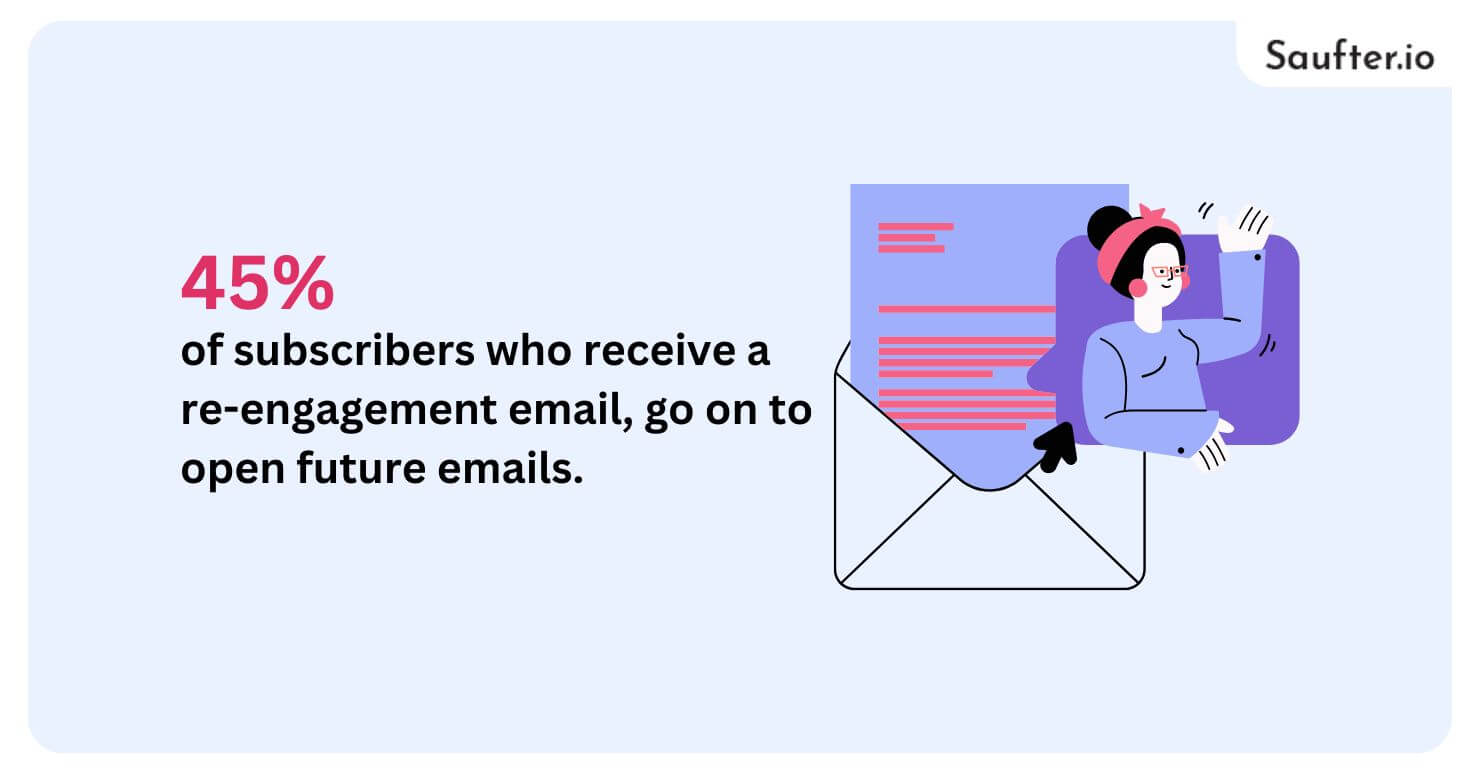
Re-engagement emails are one of the most effective ways to reconnect with your audience and boost customer retention. 45% of subscribers who receive a re-engagement email go on to open future emails, highlighting just how powerful the right message can be.
Throughout this article, we’ve shared 15 carefully curated re engagement email examples that showcase real strategies from top brands—each designed to spark interest, reignite user activity, and drive conversions. From personalized offers to humorous messages and feature updates, these examples provide proven inspiration for your own campaigns.
To take things further, a tool like Saufter can help automate and personalize your re-engagement efforts. With AI-powered suggestions, behavior-based triggers, and campaign tracking, Saufter ensures your emails land at the right time with the right message.
Ready to bring your inactive audience back? Start building your next campaign using these high-performing re engagement email examples today.
